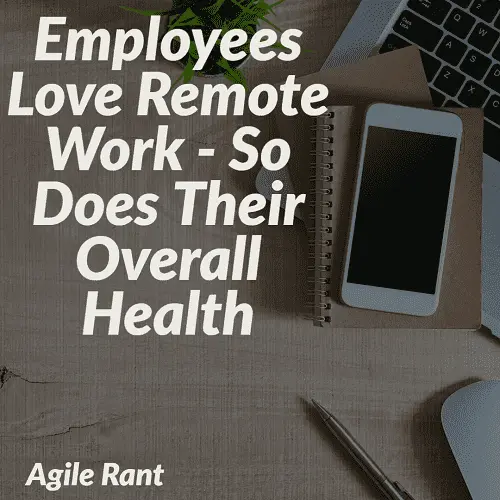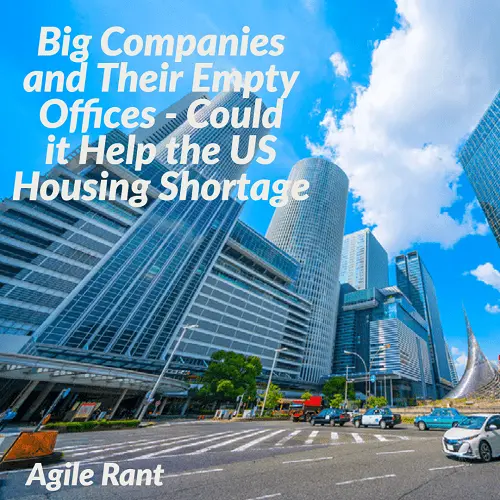In the heart of bustling urban landscapes, where the US housing shortage is most known, a silent transformation is taking place—one that holds the promise of addressing this critical challenge.
A novel solution emerges from once-mighty vacant office buildings. The winds of change breathe life into these downtown spaces as visionary architects, developers, and policymakers reimagine their purpose. This transformative trend of converting offices into vibrant residences revitalizes urban cores. While also sparking hope in solving the US housing crisis.
As Work Evolves, So Should US Housing
The landscape of work is evolving, with remote work reshaping the traditional office dynamic. As companies embrace flexible work, the demand for large downtown office spaces has waned. Which leaves towering structures echoing with emptiness. Yet, within these walls lies an opportunity to turn the tide on the US housing shortage. By repurposing these spaces into modern housing. Bringing back the heartbeat of city life.
This innovative approach breathes new life into forgotten architectural marvels. While also providing a potential fix to the housing woes of the country. Woes that have left countless American grappling for affordable and accessible places to call home. Let us consider these repurposed urban landscapes. Potential places where bustling workspaces are replaced by the laughter of families. Further, bringing the hum of community, and the promise of a brighter future for all.
US Housing Shortage is a Big Problem
The housing situation in the United States has become increasingly challenging. Posing large hurdles for individuals and families seeking stable and affordable housing. Escalating real estate prices, coupled with stagnant wages in many sectors, have created a formidable barrier to homeownership. Which is a problem for too many of the population.
Additionally, he demand for housing, driven by population growth and urbanization, has outpaced the rate of new construction. Which has lead to a shortage of available units in many cities. This scarcity has triggered bidding wars and inflated rental costs. Then leaving many individuals struggling to secure suitable housing.
Moreover, the issue is compounded by the unequal distribution of resources and opportunities. Marginalized communities, including people of color and low-income households, often face disproportionately limited access to housing options. Discriminatory lending practices, redlining, and housing segregation have left lasting scars. Which contribute to a cycle of economic and housing inequality. Something that persists to this day.
Furthermore, the lack of affordable housing options exacerbates issues of homelessness. As it forces many individuals and families to live in substandard conditions, overcrowded spaces, or even on the streets. As the housing crisis deepens, it underscores the need for comprehensive policy reforms and innovative solutions. A path to ensure housing remains a fundamental human right and is accessible to all Americans.
Reasons Empty Offices Would Help US Housing Shortage
Renovating office buildings into apartments offers a 2-pronged solution to the pressing US housing shortage. Here are several compelling reasons supporting this innovative approach:
Optimal Use of Space
Office buildings, often located in prime downtown areas, occupy valuable real estate. Converting some of these unused spaces into apartments maximizes the potential of existing infrastructure and land. Which helps to efficiently address the countries housing shortage. In Addition, doing so without further urban sprawl.
Increased Supply to Offset the US Housing Shortage
Conversions contribute significantly to the housing stock, creating a substantial number of new housing units in areas where demand is high. This infusion of supply can help stabilize housing markets and alleviate the pressure on existing homes, leading to more reasonable prices for renters and potential homeowners.
Preservation of Architectural Heritage
Many downtown office buildings boast historical and architectural significance. Repurposing these structures as residential spaces preserves cultural heritage. While also breathing new life into iconic landmarks. Further contributing to the city’s identity and sense of place.
Reduced Environmental Impact
Retrofitting empty office buildings requires fewer resources. When compared to constructing new developments. This approach helps lower the carbon footprint associated with new construction And helps align with sustainability goals and responsible urban development.
Economic Revitalization
Transforming vacant offices into apartments can revitalize neighborhoods by attracting residents. Also by increasing foot traffic, and stimulating local businesses. This injection of economic activity can lead to improved infrastructure. Helping create enhanced public spaces, and a renewed sense of community pride.
Accessible Urban Living
By converting central office spaces into housing, individuals gain the opportunity to live closer to urban amenities. They are near jobs, and public transportation hubs. In addition, this promotes walkability, reduces commuting times, and encourages a more sustainable lifestyle.
Affordable Housing Opportunities
Depending on the renovation approach, these converted apartments can offer a range of affordability levels. Further helping to build to diverse income groups. This inclusivity addresses the housing crisis’s equity aspect. By ensuring that housing is accessible to a broader spectrum of society.
Fast-Track Development to Reduce US Housing Shortage
Renovations often have shorter timelines compared to ground-up construction. Enabling a quicker response to housing needs. This nimbleness is so crucial during times of acute housing shortages.
Adaptive Reuse Innovation
Repurposing office spaces showcases the ingenuity of adaptive reuse in the built environment. This creative approach to urban planning fosters innovation within the construction industry and sets an example for sustainable development practices.
Collaborative Urban Solutions
Converting office buildings into apartments often involves collaboration between various stakeholders, including developers, architects, local authorities, and the community. This fosters a sense of shared responsibility and engenders cooperation in tackling complex urban challenges.
In essence, the conversion of office buildings into apartments represents a win-win strategy. As it not only addresses the critical housing shortage but also offers a harmonious blend of social, economic, and environmental benefits to the communities they serve.
Company perk to help with the US housing shortage
In a big shift, emblematic of the evolving workplace, several forward-thinking corporations are embracing an innovative solution to both the housing crisis and employee well-being. That is by repurposing vacant office spaces as housing for their workforce. This groundbreaking approach marks a departure from the traditional corporate paradigm. Whereas large companies recognize the symbiotic potential of utilizing empty real estate assets to provide a unique and valuable benefit to their employees.
By converting empty offices into employee housing, these companies address the challenges of housing affordability and availability. In addition, they help foster a stronger sense of community and work-life integration. This innovative housing benefit promises to attract top-tier talent and enhance employee retention. Because it significantly reduces the logistical complexities of commuting and provides a convenient, stress-free living arrangement for employees.
Furthermore, this arrangement can foster a closer sense of camaraderie and collaboration among colleagues who share the same residential space. Because it creates a dynamic environment where ideas flow freely and professional relationships flourish.
Could it work?
Because, from an operational perspective, repurposing office spaces as employee housing demonstrates a commitment to resource optimization and sustainable urban development. Besides breathing new life into these empty structures, companies contribute to the revitalization of urban cores. They can promote responsible land use, and reduce the carbon footprint associated with long commutes. This commitment to environmental stewardship aligns with broader corporate social responsibility goals and underscores the role of businesses as agents of positive change in their communities.
In conclusion
The emerging trend of converting vacant offices into employee housing presents a visionary solution that tackles housing shortages, prioritizes employee well-being, promotes sustainability, and fosters community development. As companies increasingly embrace this innovative approach, the corporate landscape stands on the brink of a transformative shift, placing equal emphasis on people, planet, and progress.

For companies that want to have less remote work, this could strike the perfect balance. Lots of employees love remote work. For cheaper and better housing, maybe they could be enticed to the office?
Also, check out this article about Turning offices into apartments. While there are challenges, it could be a win for everyone.

